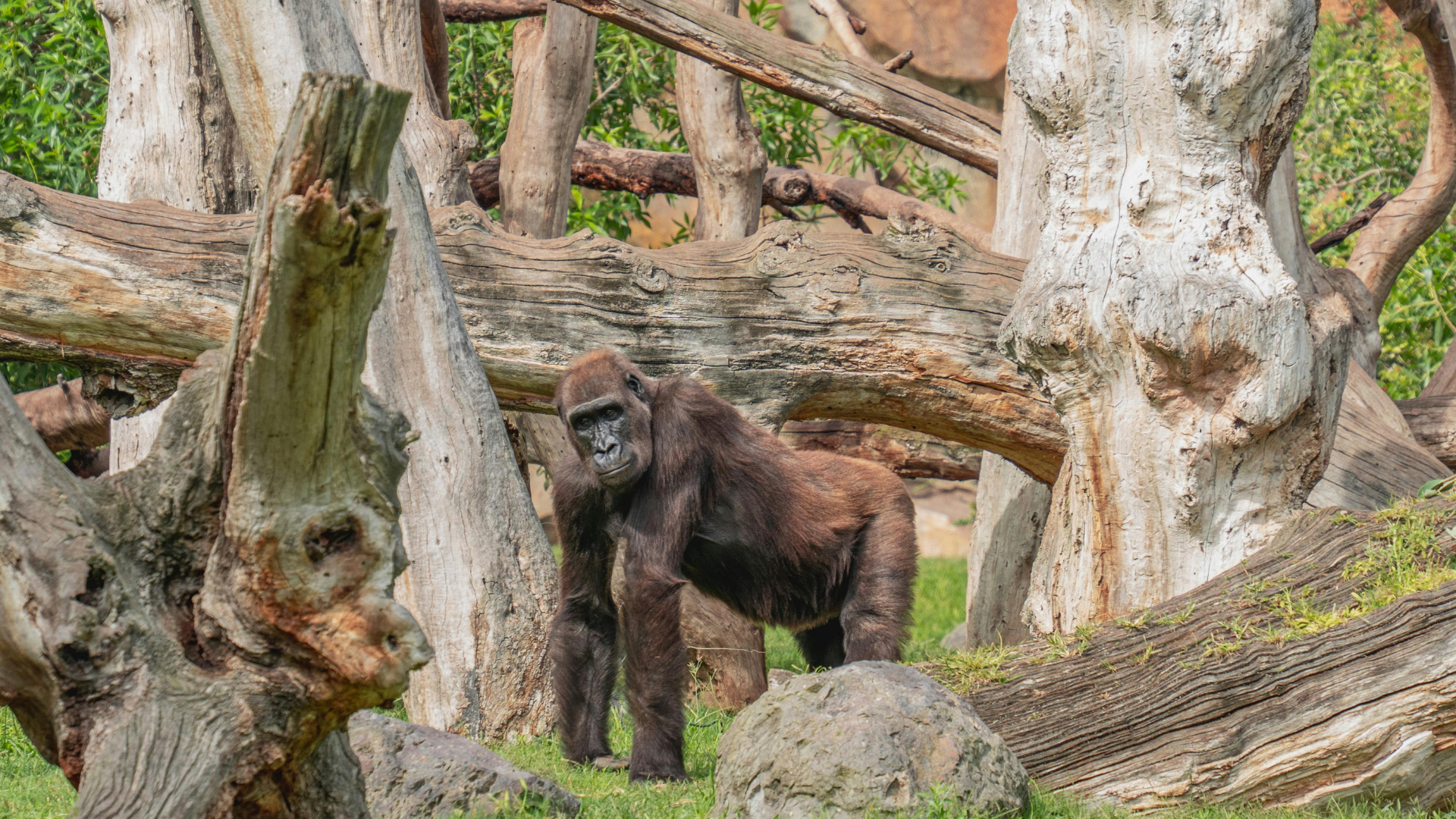
Endangered habitats are crucial ecosystems at risk due to various threats, including habitat loss and climate change. These habitats play a vital role in maintaining biodiversity, supporting countless species that rely on them for survival. The alarming decline in these environments highlights the urgent need for conservation efforts to protect what remains.
As natural spaces diminish, many species face extinction, leading to an irreversible loss of biodiversity. The consequences extend beyond individual species, affecting entire ecosystems and the services they provide to humanity. Recognising the interconnectedness of all life forms underscores the importance of preserving endangered habitats for future generations.
Addressing the challenges of habitat loss requires coordinated action across local and global levels. By understanding the factors contributing to the decline of these ecosystems, individuals and organisations can implement effective strategies to promote conservation. The survival of these habitats depends on collective efforts to nurture and restore the balance of nature.
Global Threats to Habitats
Various factors contribute to the deterioration of habitats worldwide. Climate change, deforestation, pollution, and invasive species are critical threats. Human encroachment further exacerbates these issues, leading to significant biodiversity loss.
Climate Change Impact
Climate change alters habitats globally, affecting temperature, precipitation, and sea levels. Increased greenhouse gas emissions result in warmer temperatures. This disrupts ecosystems, forcing many species to migrate or adapt rapidly.
Coral reefs, for example, experience widespread bleaching due to rising sea temperatures. Terrestrial species face similar challenges; shifting climates can render habitats unsuitable. In extreme cases, areas formerly rich in biodiversity may become barren.
These impacts are not uniform; some regions suffer more than others. The most vulnerable habitats include polar regions and low-lying coastal areas. Urgent action is necessary to mitigate these changes and protect affected ecosystems.
Deforestation and Habitat Destruction
Deforestation poses a significant risk to terrestrial habitats. Forests are often cleared for agriculture, logging, and urban development. This destruction not only removes critical shelter for countless species but also disrupts the food chain.
In regions like the Amazon, deforestation leads to loss of biodiversity and alters local climates. As trees are cut down, carbon stored in forests is released, exacerbating climate change.
Habitat fragmentation also occurs, isolating animal populations and reducing genetic diversity. This makes species more susceptible to extinction. Conservation efforts must focus on sustainable land practices to combat these effects.
Pollution and Overfishing
Pollution significantly impacts both terrestrial and aquatic habitats. Chemicals from industries, agriculture, and urban areas contaminate air, soil, and water. These pollutants harm wildlife and disrupt ecosystems.
Water bodies face considerable threats from agricultural runoff and plastics. Overfishing further depletes marine populations, leading to unbalanced ecosystems.
The decline of key species disrupts predator-prey relationships, further affecting biodiversity. Effective management of fishing practices and pollution controls is vital for restoring healthy habitats.
Invasive Species and Disease
Invasive species pose a serious threat to native wildlife. They often outcompete local species for resources, leading to declines in native populations. Examples include the introduction of cane toads in Australia, which significantly affected local amphibians.
Diseases introduced by invasive species can decimate native populations. The rapid spread of pathogens can leave little time for adaptation.
Conservation strategies need to address both the prevention and management of invasive species. Effective measures include monitoring and controlling populations before they are established.
Human Encroachment and Urbanisation
Human encroachment dramatically transforms landscapes, leading to habitat loss. Urbanisation expands into rural areas, disrupting natural habitats and altering ecosystems.
The construction of roads and infrastructure fragments habitats. This not only affects wildlife corridors but also increases human-wildlife conflicts.
As urban areas grow, the demand for resources intensifies, further pressuring natural habitats. Sustainable urban planning can mitigate some of these effects, promoting coexistence between human development and nature.
Conservation Status and International Efforts
Endangered habitats require urgent attention through effective conservation strategies. Different organisations work tirelessly to address the threats to these environments and the species that inhabit them.
IUCN Red List and Species Classifications
The International Union for Conservation of Nature (IUCN) plays a pivotal role in assessing the conservation status of habitats and species. The IUCN Red List classifies species such as Critically Endangered, Endangered, and Vulnerable. This classification affects conservation priorities and funding.
For example, the Sunda pangolin is classified as Critically Endangered, marking it as a species in immediate need of protection. The IUCN’s rigorous assessment criteria help determine the risk levels of various species, guiding conservation efforts and policy decisions. Monitoring these classifications is essential for assessing the effectiveness of protective measures over time.
Conservation Efforts and Protected Areas
There are numerous global conservation efforts aimed at protecting endangered habitats. Protected areas, such as national parks and wildlife reserves, serve as sanctuaries for many species. These zones are established to conserve biodiversity, maintain ecosystems, and provide refuge from human interference.
Governments and NGOs collaborate to create and manage these protected areas. Funding from sources like the Global Environment Facility supports such initiatives. Furthermore, local communities are often involved, ensuring that conservation methods are sustainable and culturally appropriate.
In addition, many countries are signatories to international agreements that promote biodiversity conservation. These agreements encourage habitat restoration and sustainable practices.
WWF and Global Initiatives
The World Wildlife Fund (WWF) is a key player in global conservation initiatives. It focuses on preserving natural habitats and preventing species extinction through various programmes. The WWF’s strategies include the promotion of sustainable resource use and community engagement in conservation efforts.
WWF runs campaigns targeting critical habitats like forests, oceans, and freshwater ecosystems. Their initiatives often involve partnerships with governments and local organisations to invest in conservation technologies and methods. Global outreach through education and advocacy plays a vital role in raising awareness regarding endangered habitats.
Combining these efforts facilitates a multidisciplinary approach to conservation, fostering resilience in the face of environmental challenges.
Habitat Restoration and Sustainable Practices
Effective habitat restoration and sustainable practices play a critical role in conserving endangered ecosystems. They involve strategic actions aimed at revitalising habitats and managing resources sustainably.
Reforestation and Recovery Programs
Reforestation is essential for restoring biodiversity and improving ecosystem health. It involves planting native trees and plants to rebuild habitats. This practice not only mitigates climate change but also enhances soil quality and water retention.
Recovery programs often focus on specific species, aiming to restore balance within ecosystems. For instance, organisations may introduce captive-bred animals back into their natural habitats. Monitoring the success of these initiatives is crucial.
By actively engaging with local flora and fauna, these programmes contribute to a more resilient and vibrant ecosystem.
Sustainable Natural Resource Management
Sustainable management of natural resources seeks to balance human needs with ecosystem health. This approach includes practices like sustainable fishing, agriculture, and forestry.
Implementing quotas for fishing can ensure that fish populations remain viable. In agriculture, techniques such as crop rotation and organic farming reduce environmental impacts.
Forestry practices like selective logging preserve biodiversity while allowing for economic gain. Resource management necessitates careful planning and monitoring to adapt to environmental changes and community needs.
Community Engagement in Conservation
Community involvement is fundamental for successful conservation efforts. Engaging local populations fosters a sense of ownership and responsibility towards their environment.
Educational programs can empower communities to adopt sustainable practices. Workshops on composting or wildlife protection can provide valuable skills and knowledge.
Collaborative efforts, such as forming local conservation groups, enhance these initiatives. When communities actively participate, it increases the likelihood of long-term success in habitat restoration efforts.
Endangered Habitats by Region
Various regions across the globe face significant threats to their unique habitats, leading to a rise in endangerment. The interplay between climate change, human activity, and biodiversity loss shapes the fate of these critical environments. Four major areas stand out due to their vulnerabilities.
The Arctic and Melting Ice
The Arctic is experiencing rapid changes due to rising global temperatures. The melting of sea ice disrupts local ecosystems and threatens species like polar bears and seals. As ice diminishes, access to traditional hunting grounds diminishes, impacting Indigenous populations reliant on these species for survival.
Sea ice also contributes to global climate regulation. Its decline exacerbates warming, creating a feedback loop. The loss of permafrost further releases stored carbon, worsening climate change. Efforts to mitigate these effects include conservation initiatives and international agreements aimed at reducing greenhouse gas emissions.
Tropical Forests and Biodiversity
Tropical forests are biodiversity hotspots, home to over half of the world’s species. Deforestation, driven by agricultural expansion and logging, poses significant threats. These forests, such as the Amazon and the Congo Basin, face severe habitat loss, pushing countless species toward extinction.
The intricate web of interdependence among rainforest species amplifies the impact of habitat destruction. Loss of trees affects not only plant life but also animals that rely on specific flora for food and shelter. Conservation strategies like reforestation and sustainable land use are vital for protecting these ecosystems.
Coral Reefs and Ocean Ecosystems
Coral reefs, often referred to as the “rainforests of the sea,” are critical for marine biodiversity. They provide habitat for numerous fish species and protect coastlines from erosion. However, climate change, overfishing, and pollution severely threaten these delicate ecosystems.
Rising sea temperatures lead to coral bleaching, which can result in significant reef degradation. Ocean acidification further impacts coral health and recovery. Protecting coral reefs requires a multifaceted approach that includes marine protected areas and sustainable fishing practices.
Arid Environments and the Arizona Case Study
Arid environments, like those found in Arizona, present unique challenges for conservation. These habitats are often characterised by extreme temperatures and limited water resources, supporting specially adapted flora and fauna. However, climate change and urbanisation are mitigating their resilience.
In Arizona, the introduction of invasive species threatens native plants and animals. Conservation efforts focus on habitat restoration and controlling invasive populations. Public awareness and education play crucial roles in safeguarding these ecosystems, as human activities significantly influence their future.
Each region’s endangered habitats reflect the urgent need for effective strategies to combat threats and preserve biodiversity. These efforts require collaboration among governments, organisations, and local communities.
